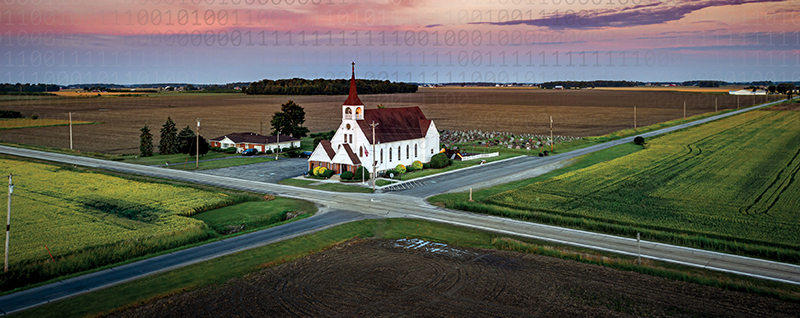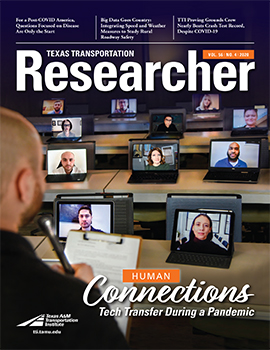The term “big data” is ubiquitous these days in the transportation research world with usage from complex travel demand models to forecasting economic needs. Texas A&M Transportation Institute (TTI) researchers recently conducted a research project that examined the prevailing operating speeds on rural roadways on a large scale and determined how different measures of operating speed interact with roadway characteristics and weather condition to influence the likelihood of crashes. The project was sponsored by the U.S. Department of Transportation’s Safety Data Initiative.

“Our sponsor’s vision is to integrate newer big data sources with traditional datasets to enhance the general understanding of crash risk and potential to prevent crashes and improve rural roadway safety,” explains TTI Assistant Research Scientist and principal investigator Subasish Das. “There is an urgent need for research to explore new data and better understand how to effectively quantify highway safety to overcome the limitations of current methods.”
This study developed databases for two states by incorporating several data sources. The databases used in this study included 2015 crash data from the Highway Safety Information System, travel speed data from the National Performance Management Research Data Set, and roadway information from the Highway Performance Monitoring System.
The models combined traffic speed data with roadway geometrics, traffic operations and weather data to generate annual and daily crash predictions on roadway segments for different rural roadway facility types (e.g., rural two-lane roadways). One of the project’s products is a decision support tool that shows heatmaps of rural roadways based on the model outcomes.
“Our prototype interactive decision support tool incorporated Washington and Ohio data containing the expected total crashes from the final models to show segment-level high-risk analysis,” says Das. “The tool contains a dashboard with various dropdown lists to generate estimated annual crashes on Washington and Ohio roadway segments.”

The research team found that certain speed measures were beneficial in quantifying safety risk. Annual-level crash prediction models show that increased variability in hourly operating speed within a day and increased monthly operating speeds within a year are both associated with a higher number of crashes. This model also shows that rural roadway segments experiencing significant differences between weekday and weekend operating speeds are associated with a high number of crashes.
One of the most important research findings was that daily-level crash prediction models show that a segment with high variation in daily average speeds is expected to experience a higher number of crashes than a segment with a lower variation in daily speeds. Examining time segments before and after crashes shows that speed variation increases significantly before a crash compared to a normal traffic-flow condition.
“Overall, this study shows the benefit of incorporating speed data in safety modeling to more effectively identify locations that would benefit from additional safety treatments and countermeasures,” notes Das. “Having this information available to state department of transportation officials is vital to achieving an understanding of where the greatest crash risks may occur and where they need to focus their resources toward mitigating these risks.”
In addition to this project, Das is also leading research projects to explore the development of short-term crash prediction models to predict the safety performance of rural roadways for specific geometric, operational and exposure characteristics, as well as to develop speed-related crash modification factors for the existing crash prediction models of the American Association of State Highway Transportation Officials’ Highway Safety Manual.
